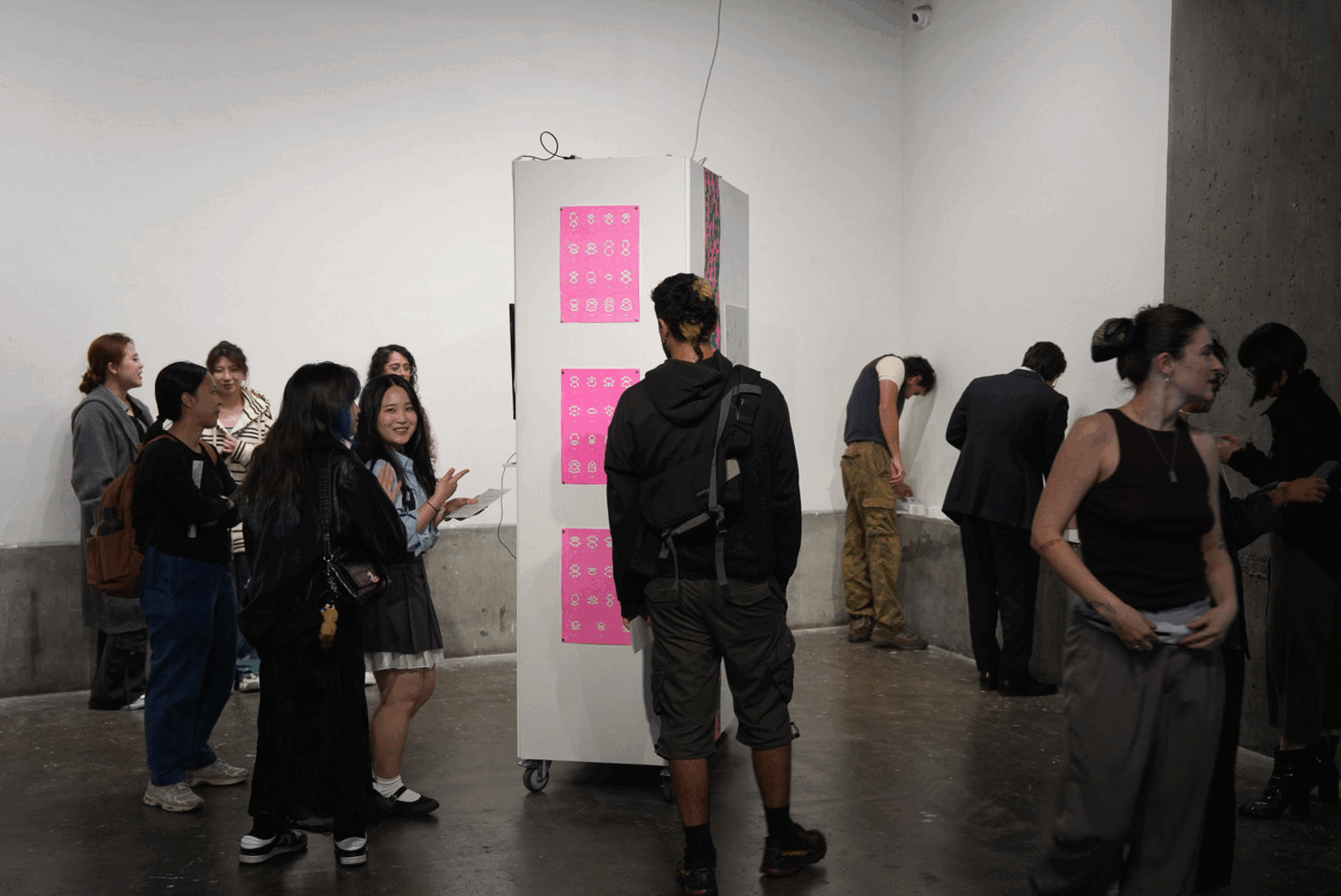
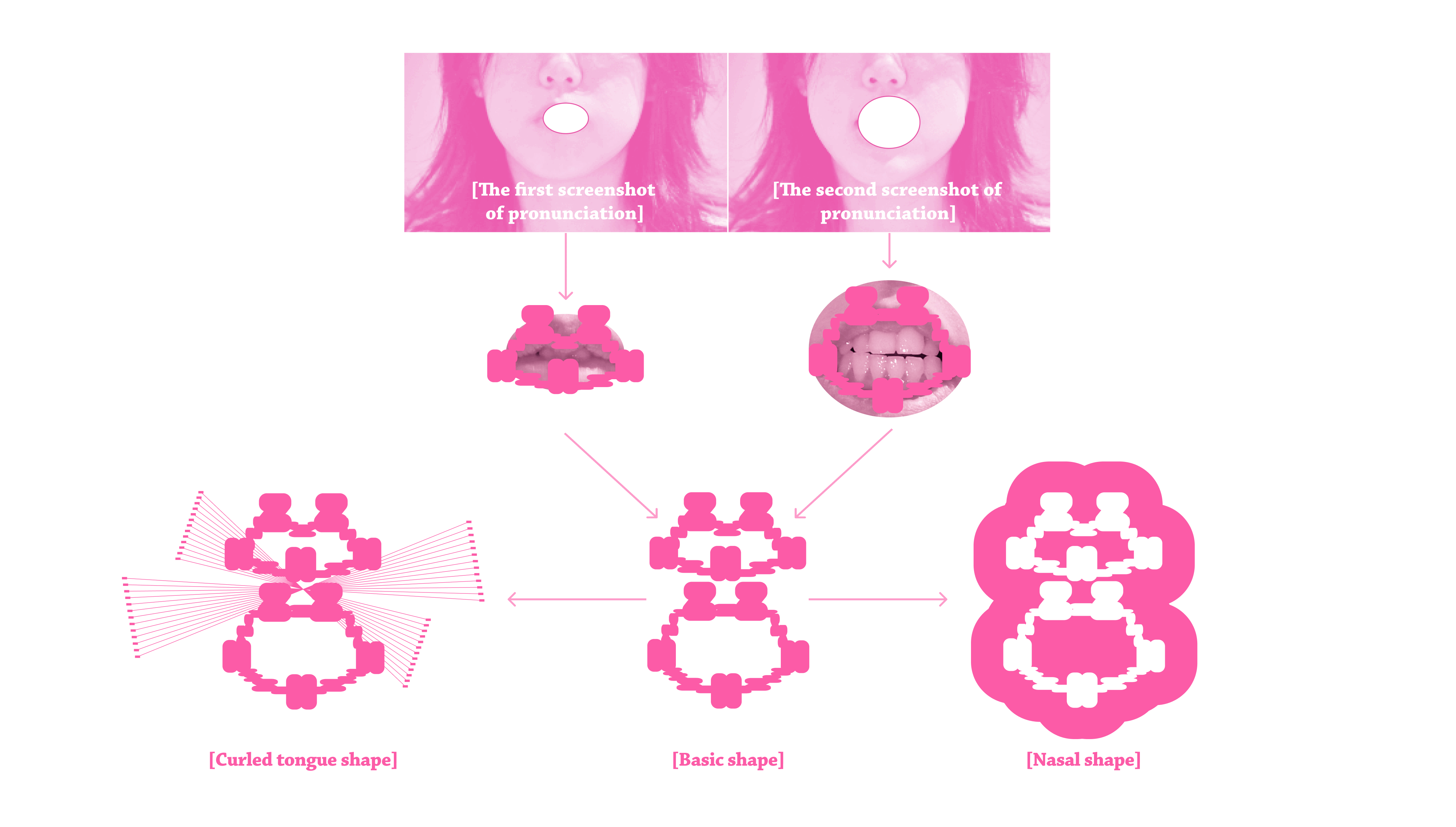
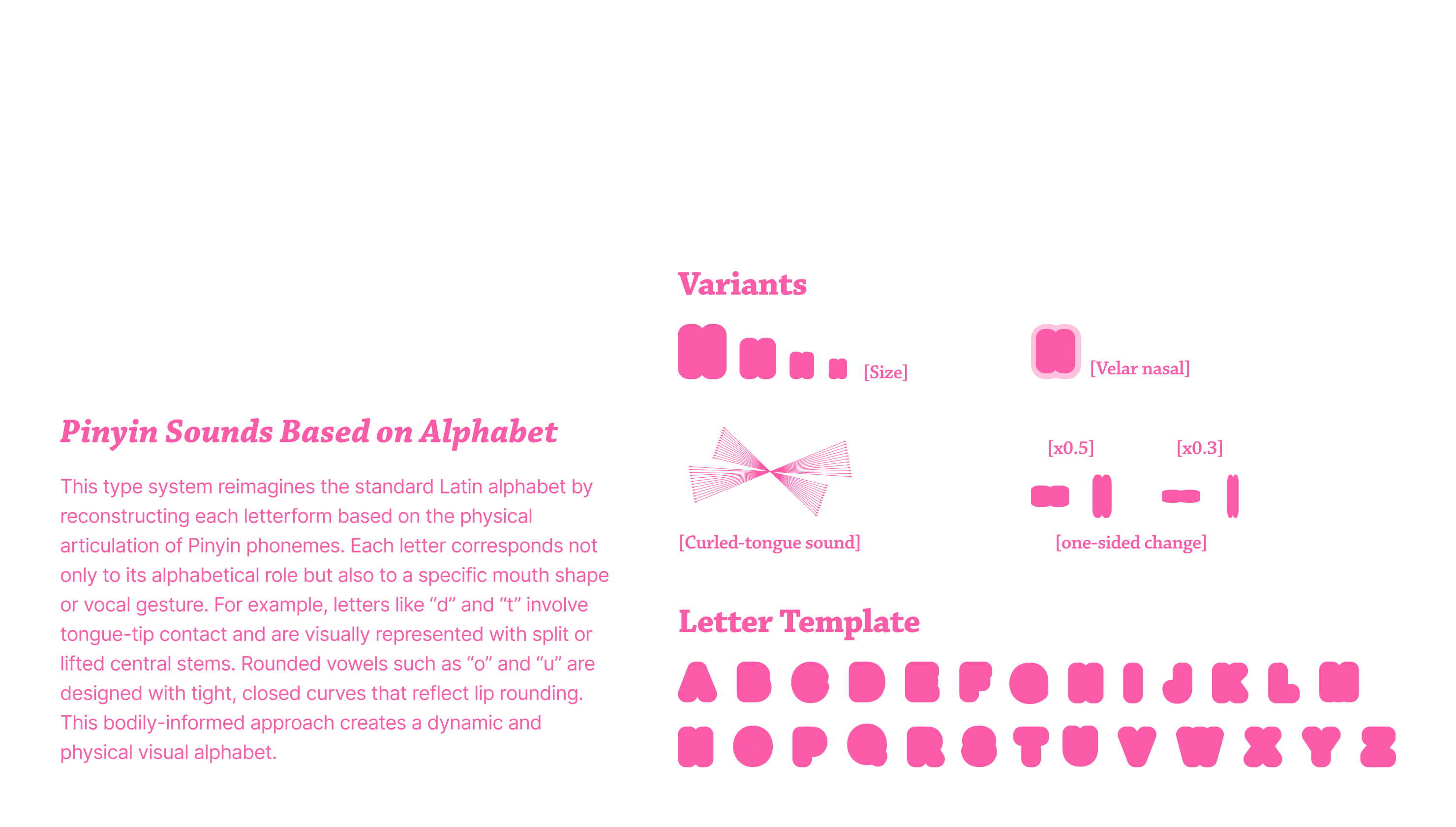
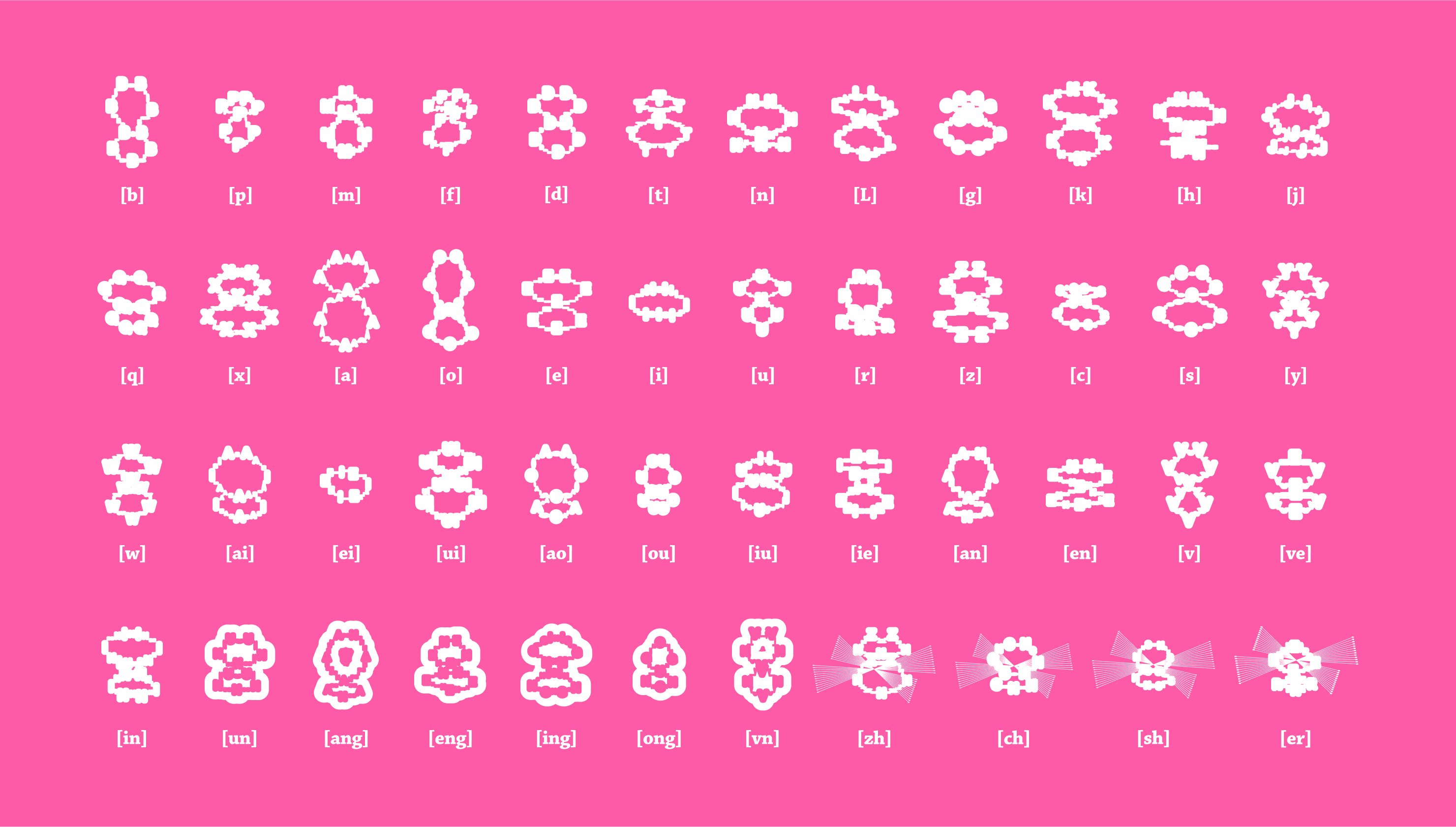

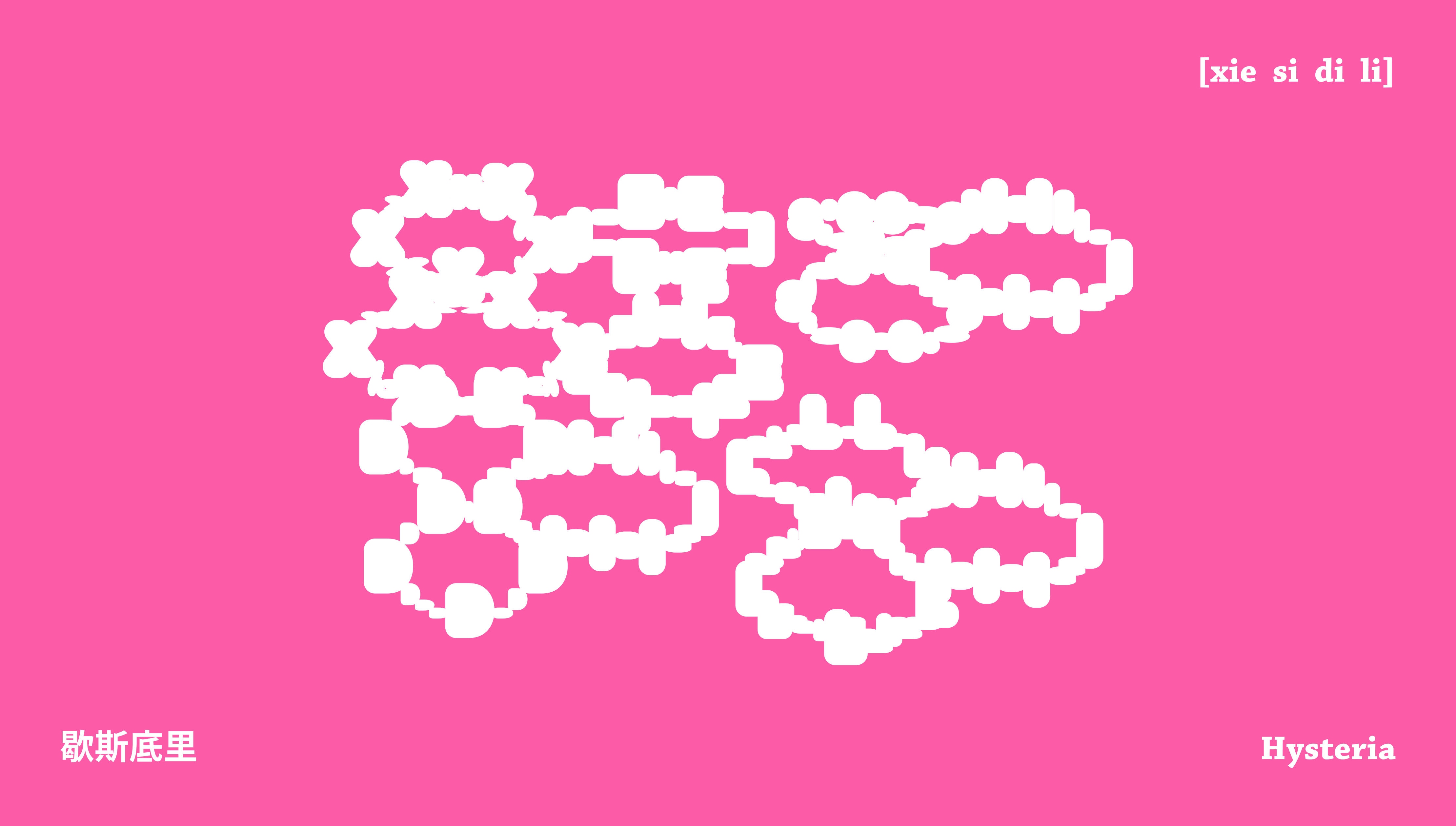
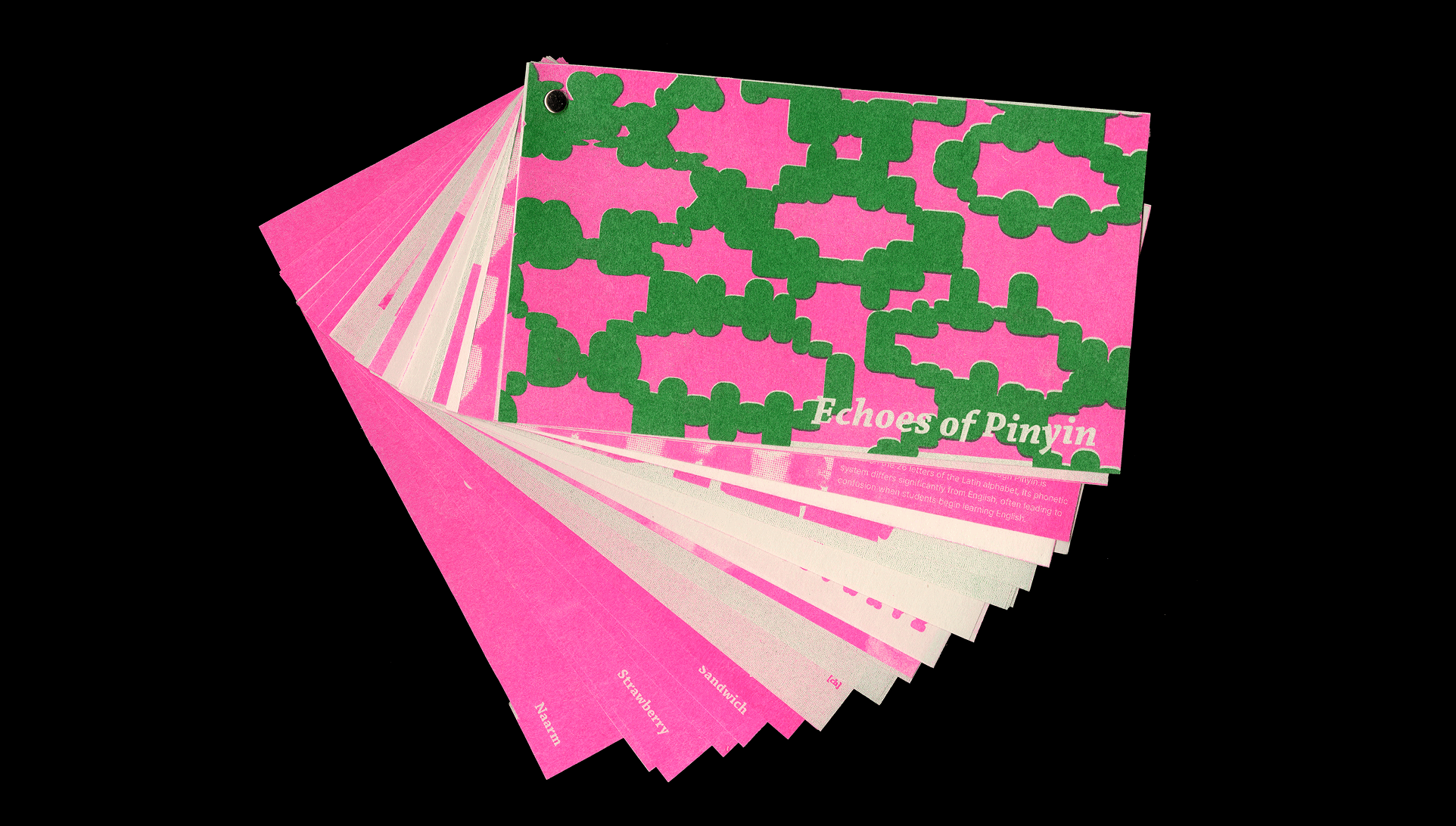
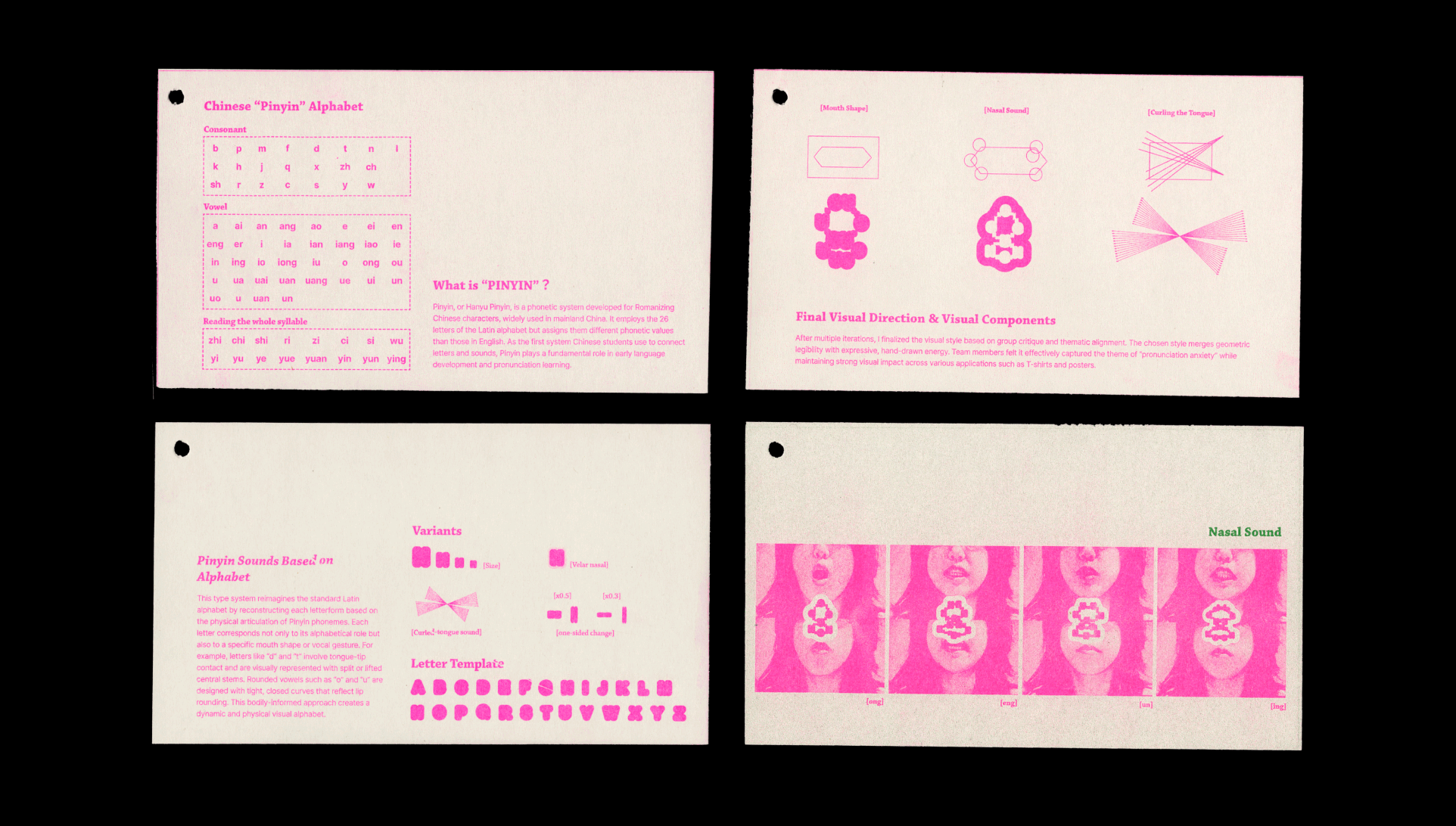
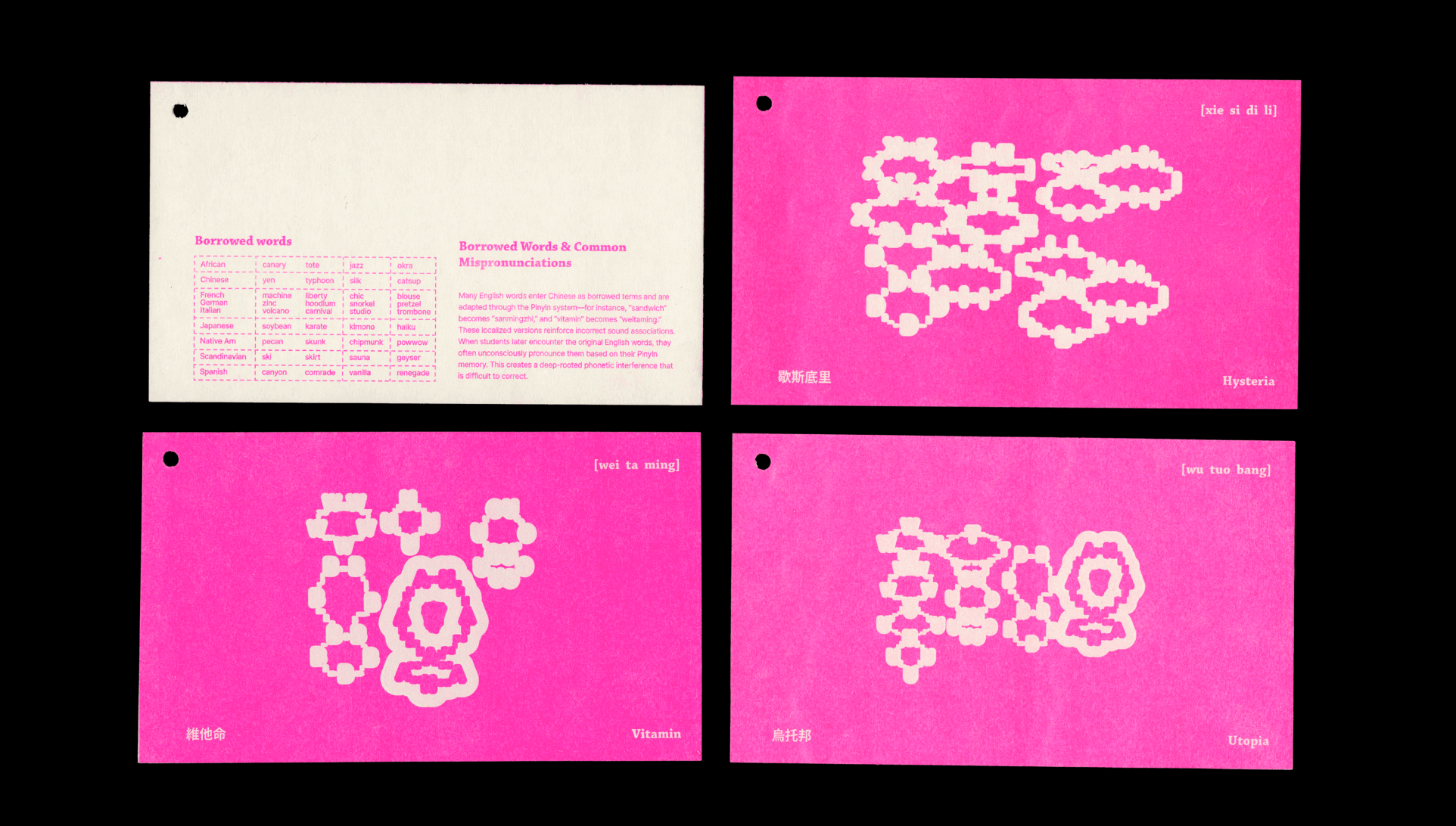


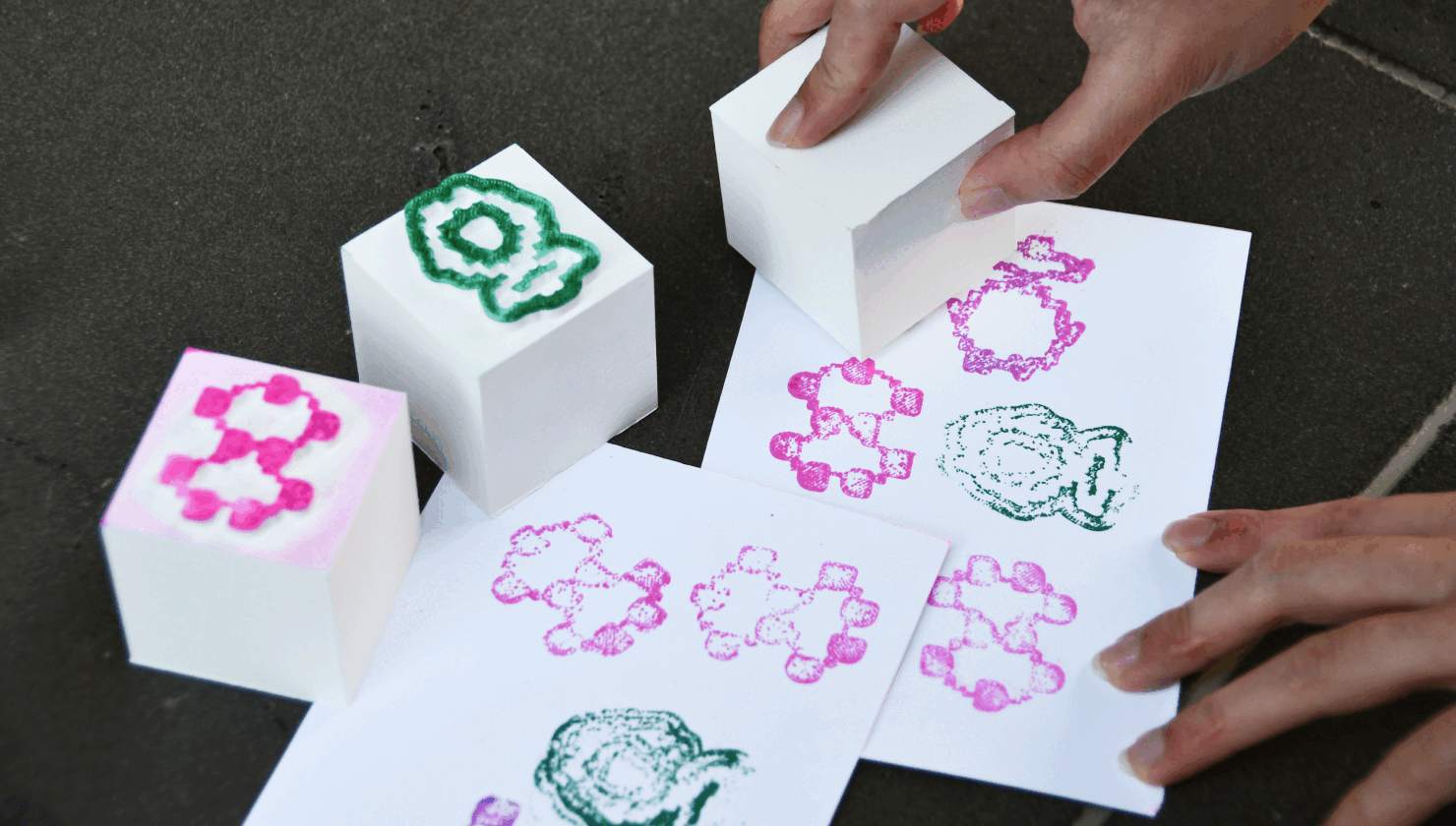

ECHOES OF PINYIN
In mainland China, students first learn pronunciation through Pinyin, a system based on the Latin alphabet but with sound rules unlike English. As their first link between letters and sounds, Pinyin shapes later English learning, often causing phonetic transfer—for instance, reading “i” as [i] or pronouncing “r” like “日.” These habits can persist, creating accent anxiety.
This project uses experimental type design to visualize this interference. Drawing on mouth shapes in Pinyin articulation, the typeface turns oral movement into visual form, expressing the tension and emotion of language learning. It also reflects how Pinyin continues to shape the pronunciation of loanwords, revealing its lasting impact on cross-linguistic experience.
字音回声
在中国大陆的教育体系中,学生最早通过“拼音”学习汉字发音。拼音以拉丁字母为基础,但发音规则与英语差异显著。作为理解“字母—发音”关系的第一套系统,拼音深刻影响了学生对英语语音的认知,常导致“语音迁移”。例如,将英语字母 “i” 读作 [i],或将 “r” 发成类似 “日” 的音。这种混淆会长期存在,引发发音焦虑。
本项目以此现象为出发点,通过实验性字体设计,视觉化呈现中国学生学习英语发音时的心理与生理状态。字体以拼音口型为基础,将口腔动作转化为视觉符号,捕捉语言学习中的焦虑与挣扎。